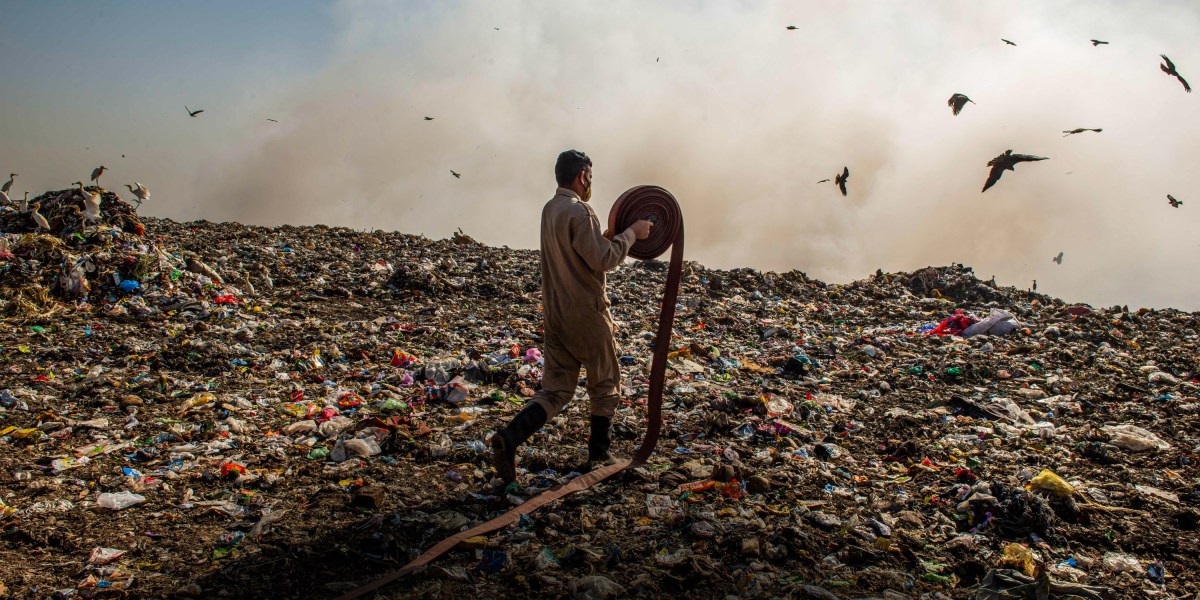
Half the world’s reserves of the element are found in Katanga, in the south of the Democratic Republic of Congo (DRC), which puts this resource-rich region at the center of the global energy transition. In Kara’s telling, the cobalt rush is another chapter in an age-old story of exploitation. In the last two centuries, the DRC has been a center not only for the bloody trade in enslaved humans but also for the colonial extraction of rubber, copper, nickel, diamonds, palm oil, and much more. Barely a modern catastrophe has unfolded without resources stolen from this soil: copper from the DRC made the bullets for two world wars; uranium made the bombs dropped on Hiroshima and Nagasaki; vast quantities of tin, zinc, silver, and nickel fueled Western industrialization and global environmental crises. In return, the DRC’s 100 million people have been left with little by way of lasting benefits. The country still languishes at the foot of the United Nations development index and now faces disproportionate impacts from climate change.
In Cobalt Red, Congo’s history plays out in vignettes of barbarous theft perpetrated by powerful Western-backed elites. Kara, an author and activist on modern slavery, structures the book as a journey, drawing frequent parallels to Joseph Conrad’s 1899 Heart of Darkness, with the city of Kolwezi substituting for Kurtz’s ivory-trading station, the destination in the novella. Kolwezi is the center of Katanga’s cobalt trade. It is “the new heart of darkness, a tormented heir to those Congolese atrocities that came before—colonization, wars, and generations of slavery,” Kara writes. The book provides a speedy summary of the nation’s history starting with the colonial vampirism of the Belgian king Leopold’s “Free State,” described by Conrad as the “vilest scramble for loot that ever disfigured the history of human conscience.” The king’s private colony forced its subjects to collect rubber under a system of quotas enforced by systematic execution and disfigurement; forced labor continued well into the 20th century in palm oil plantations that supplied the multinational Unilever company.
These three books offer to connect the reader to the feel and smell and rasping reality of a world where materials still matter.
Kara’s multiyear investigation finds the patterns of the past repeating themselves in today’s green boom. “As of 2022, there is no such thing as a clean supply chain of cobalt from the Congo,” he writes. “All cobalt sourced from the DRC is tainted by various degrees of abuse, including slavery, child labor, forced labor, debt bondage, human trafficking, hazardous and toxic working conditions, pathetic wages, injury and death, and incalculable environmental harm.” Step by step, Kara’s narrative moves from the fringes of Katanga’s mining region toward Kolwezi, documenting the free flow of minerals between two parallel systems supposedly divided by a firewall: the formal industrial system, under the auspices of mining giants that are signatories to sustainability pacts and human rights conventions, and the “artisanal” one, in which miners with no formal employer toil with shovels and sieves to produce a few sacks of cobalt ore a day.
We learn of the system of creuseurs and négociants—diggers and traders—who move the ore from denuded fields into the formal supply chain, revealing that an unknown percentage of cobalt sold as ethical comes from unregulated toil. If Material World tells a neat story of capitalism’s invisible hand, the force that whisks resources around the planet, Cobalt Red documents a more brutal and opaque model of extraction. In Kara’s telling, the artisanal system is grueling and inefficient, involving countless middlemen between diggers and refineries who serve no purpose except to launder ore too low-grade for industrial miners and obscure its origins (while skimming off most of the earnings).
Everywhere Kara finds artisanal mining, he finds children, including girls, some with babies on backs, who huddle together to guard against the threat of sexual assault. There is no shortage of haunting stories from the frontlines. Cobalt ore binds with nickel, lead, arsenic, and uranium, and exposure to this metal mixture raises the risk of breast, kidney, and lung cancers. Lead poisoning leads to neurological damage, reduced fertility, and seizures. Everywhere he sees rashes on the skin and respiratory ailments including “hard metal lung disease,” caused by chronic and potentially fatal inhalation of cobalt dust.
One woman, who works crushing 12-hour days just to fill one sack that she can trade for the equivalent of about 80 cents, tells how her husband recently died from respiratory illness, and the two times she had conceived both resulted in miscarriage. “I thank God for taking my babies,” she says. “Here it is better not to be born.” The book’s handful of genuinely devastating moments arrive like this—from the insights of Congolese miners, who are too rarely given the chance to speak.
